Filed under: General Health, Nutrition
In today’s piece I wanted to give a nice little tip on fruit preservation – specifically bananas. Bananas are one of my favorite fruits. Apparently when I was wee little lad I used to stand up in my crib and yell “nanas” over and over to my mom until she fed me some bananas, and that love affair has never ended. However, unlike most foods, I am rather particular about my bananas; I like them a little green, and once they are spotted brown I simply won’t eat it. Fortunately there is way to keep bananas at their desired state of ripeness far longer than you might think possible.
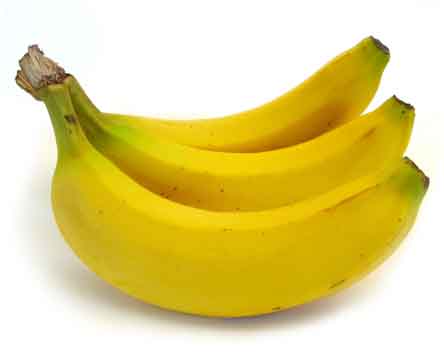
Normally bananas are kept in a fruit bowl or hanging from a rack. While this is fine, if you are like me and really prefer your bananas at certain point in time, then that is far from optimal as they brown quickly. This leads to bananas simply going uneaten, and I hate wasting food. A far superior method is to actually keep your bananas in the refrigerator!
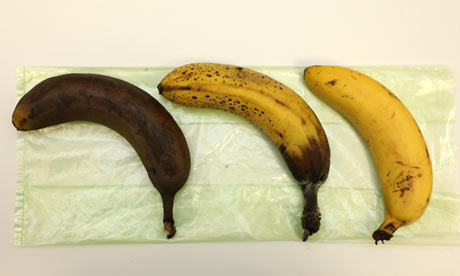
Once bananas have reached your desired level of ripeness, simply place them in the fridge in your fruit drawer and they will remain at that state for nearly a week! The peels themselves will change plenty, turning brown and kinda nasty looking, but the fruit itself hardly changes, preserving that delicious flavor. Try it out and let me know how it goes!
Filed under: General Health, Nutrition, Training, Weight Loss
I know I have been talking about Tim Collins a lot this week, but it is a truly amazing story. EC and Pete flew out to Kansas City to see him on Opening Day yesterday, and lo and behold Timmy got to pitch the 9th inning. While KC lost 4-2, Timmy threw 19 pitches, 10 for strikes leading to 1 hit, 1 walk, 1 strikeout and 0 runs. Not too shabby for a 21 year old kid huh?
I also hope that those of you not living in the Northeast are loving life right now, as up here in Augusta, Maine we are projected to get 8-14 inches of heavy, wet snow today! Awesome! I love shoveling.
Anyway, onto actual nutrition content.
Jonny Bowden had a recent article called Foods to Fight High Blood Pressure that I thought was excellent overall. However I feel that there were a few important points that were left unsaid that I wanted to touch on and expand on the topic a bit. To truly get the most out of this post, I recommend you read that one first, though I will provide a small recap:
- Approximately 1 in 3 US adults has high blood pressure, and 25% of them don’t even know it
- High blood pressure is directly responsible for over 56,000 US deaths each year
- The research generally shows that excess sodium in our diets contributes to high blood pressure for many
- While cutting back sodium can help, consuming more potassium can be just as effective for managing blood pressure
- In fact increasing potassium intake without decreasing sodium will still improve blood pressure
- Here is the list JB provides on potassium containing foods:

- Swiss Chard – 961 mg per cup
- Bananas – 422 mg in one medium banana
- Spinach – 839 mg per cup
- OJ – 496 mg per cup
- Dried apricots – 550 mg per 1/4th cup (1 serving)
- Sweet potatoes – 542 mg per medium sweet potato
- Avocados – CA variety – 690 mg per, FL variety – 1067 mg per
- Cantaloupe – 368 mg in 1/4 of a medium cantaloupe
- Figs – 381 mg per half cup
- Peaches – 322 mg in one large peach
- Beans – 477-1224 mg per cup
- Kale – 299 mg per cup
- Some other foods lower blood pressure by other mechanisms such as celery, garlic, beet juice, whey protein powder and vitamin D.
Now my two cents.
Read the rest of this entry »
Filed under: General Health, Nutrition
As promised yesterday, today’s post is going to be an epic one. The You Asked, I Answered posts are some of my favorites, and today is going to be a great one. I have three great questions that I think a lot of people wonder about, and I provide some pretty thorough responses. Enjoy!
Q. Hi Brian-
I have a follow-up question to one of your recent postings (you can use this question on your blog if you want); you mentioned that you have ‘a probiotic’ at breakfast. I know this word, but really don’t understand the term. When I think of probiotic, I think kefir, yogurt, sauerkraut and/or kimchee. I’ve also seen the term ‘prebiotic.’ Can you maybe expound on this topic (or if you have addressed this in a previous posting, maybe you can direct me to it).
As always, HUGE THANKS for your time and thoughts:-)
A. First off, thinking of whole food sources of probiotics is a great thing! Probiotics are simply live bacteria/microorganisms that are thought to beneficial to the organism in which they reside. Probiotic literally means “for life.”

Read the rest of this entry »
Filed under: Nutrition, Recipes
I realized that I have not posted a new recipe in quite a while, so I figured tonight would be as good a time as any. This recipe actually comes from Darcy, an online client of mine. The focus is on high quality, real-food pancakes, and they are fantastic! They contain the excellent grain quinoa, as well as some omega-3 eggs and fruit of choice. Have some with a nice 3-egg omelet or scramble and you hvae yourself a sweet little breakfast. Give them a shot and let me know what you think!

Darcy’s Quinoa Pancakes
Ingredients
- 1 1/2 cups quinoa flakes
- 3 large whole omega-3 eggs
- 6 large egg whites
- 3 T. ground cinnamon
- 2 servings of fresh fruit (berries, bananas, peaches, etc.)
Directions
I mixed the eggs in my blender (I have a basic blender, nothing fancy-schmancy) first, then added the fresh fruit (medium-sized pieces), then the cinnamon and finally the quinoa flakes.
I make this large quantity of batter at once and then I can just cook the pancakes in the morning as needed. This quantity will make about 10 small to medium-sized pancakes (like the size you would get as a side at an IHOP).
Filed under: General Health, Nutrition
Many people wonder if it is worth buying organic produce, or if the extra price lightens your wallet without improving your health any more than conventional produce would.
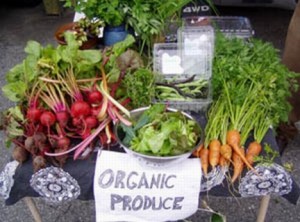
Unfortunately evidence does not seem to provide a conclusive answer. Some research shows that organic produce have higher vitamin, mineral and antioxidant content. Other research shows the nutritional difference between organic produce and conventional to be insignificant. In reality there may be much more to the story than simply the nutrient content: the enormous amounts of pesticides, herbicides and fungicides conventional farmers use to keep bugs and weeds at bay.
Again some research has shown that the consumption of these chemicals in the amounts expected from daily produce consumption does not produce any harm, at least in the parameters covered in the study. Yet there is emerging research telling us a different story. Original research on the safety of these chemicals did not take into account possible weight-regulation disruption. Many of these compounds mimic hormones in our body, disrupting the endocrine system and the delicate balance of weight maintenance and self-regulation. The combination of dozens of pesticides, herbicides, fungicides, hormones, antibiotics, xenoestrogens and the countless other chemicals we encounter everyday might be playing a much greater role in this obesity epidemic than was ever previously realized.
To illustrate this point more clearly is the fact that there is growth in obesity in a segment of the population that can’t be explained by over indulgence, poor food choices or a sedentary lifestyle: infants. The Harvard School of Public Health reported that obesity in infants under six months had risen 73% since 1980.

To explain this peculiar phenomenon, recent research has focused on the possibility that chemicals present in our environment and especially prenatal exposure to those chemicals increases risk of obesity. Many of these chemicals were once or are currently deemed safe, but this new research is showing a different story.
This recent research has been done on mice and rats, with exposure to compounds like BPA (in hard plastics), organotins (in PVC pipes, fungicides and pesticides) and atrazine (a common herbicide). It was found even with very low level exposure, and without a change in calorie intake or physical activity level, that the mice or rats exposed to the chemicals were up to 20% heavier with 36% more bodyfat (depending on the chemical) than mice not exposed. The exposed mice had decreased basal metabolic rates, increased body weight, increased intra-abdominal fat and insulin resistance; a recipe for disaster.
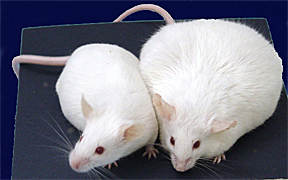
Control vs Chemical-Exposed Mouse
Clearly the effect of some, if not all, of these compounds in our food supply is contributing in some capacity to this obesity epidemic. Not to mention that due to toxic run-off in the Mississippi River from conventional agricultural and animal production there is a dead-zone in the Gulf of Mexico that ranges from 6,000 to 8,500 square miles (about the size of New Jersey) where oceanic life can no longer be supported. The chemicals cause the gulf to be a hypoxic wasteland where only algae can proliferate, wreaking havoc on the surrounding environment, as well as the fishing industries. Even worse, this is the most well known, but only one of approximately 250 dead-zones like this around the world.
The fact of the matter is that there is still too little known about many of the chemicals used in conventional agriculture. Ones once deemed safe for human consumption are now being found to cause problems in weight-regulation, insulin sensitivity and endocrine disruption. This is why I recommend you purchase as many organic, sustainably farmed fruits, vegetables and other foodstuffs as possible. Removing these dangerous chemicals from our food supply, and from your body, might go a long way in improving health, energy and weight regulation.
Having said all that, I certainly understand as well as anyone the limits you can have on your food budget, which can make buying organic produce difficult. To help you prioritize your organic food choices, whether you are on a budget or you would simply like to know which type of produce has the highest pesticide residues-and which do not-the following guide from the Environmental Working Group will help. I recommend buying organic at least for the 12 Most Contaminated. Regardless of whether the produce was conventionally grown or organically, I also recommend you thoroughly wash before eating with a fruit and vegetable wash.
12 Most Contaminated
1. Peaches
2. Apples
3. Sweet Bell Peppers
4. Celery
5. Nectarines
6. Strawberries
7. Cherries
8. Pears
9. Grapes (Imported)
10. Spinach
11. Lettuce
12. Potatoes
12 Least Contaminated
1. Onions
2. Avocado
3. Sweet Corn (Frozen)
4. Pineapples
5. Mango
6. Asparagus
7. Sweet Peas (Frozen)
8. Kiwi Fruit
9. Bananas
10. Cabbage
11. Broccoli
12. Papaya
I didn’t even begin to cover other realms of the topic, like different types of organic, such as industrial organic. Another topic for another day.
Filed under: General Health, Nutrition
On my last blog post of 2009, I asked you the readers to give me feedback on what you were looking for in 2010. What questions you had, or what topics you wanted covered, stuff like that. I had a tremendous response, and I thank you for that. A few people in particular asked me to elucidate my grocery shopping habits, and help them figure out what theirs should be.

When it comes to grocery stores, most are set up the same way. The good stuff on the outside, the dangerous shit in the middle. If you stick to the perimeter of the store you will find the fruits and vegetables, the fresh seafood, the fresh beef and poultry, the eggs, the yogurt and usually the nuts. That is the vast majority of your needs right there!
Now you will have to make foray’s into the middle aisles to get stuff like beans, frozen fruit, frozen vegetables, quinoa, oats, milled flax, tuna, salsa, natural peanut butter and more, but the trick is to make a list and stick to it! That is a key point right there, do not stray off of your list, that is when you get into trouble.

Now these same people also asked how I differentiate my shopping. Meaning, where do I buy some stuff, where do I buy others, since not everything I eat is available at one grocery store, or at least isn’t the most reasonably priced at every store. If you have the means, you could probably purchase everything I list below at Whole Foods, if like me that is well outside of your budget, then you should consider splitting up your shopping.
I do the vast majority of my shopping at a local Stop & Shop, with some Whole Foods mixed in and a dash of Amazon.com. Here is exactly how I do it:
Stop & Shop (purchased weekly or bi-weeekly)
Produce
- gala apples
- navel oranges
- bananas
- random fruit selection here: strawberries, pineapple, etc
- baby carrots
- cucumber
- spinach
- sweet onion
- green pepper
- sweet potatoes
- wild frozen blueberries
- frozen raspberries
- frozen strawberries
- frozen mixed peppers and onions (for omelets)
- frozen mixed vegetables (a few varieties for late-night stir-fry)
- veggie wash (especially for foods on Dirty Dozen List)
Nuts & Meat
- almonds
- walnuts
- pecans
- wild salmon
- buffalo
- chicken breast family pack (when on sale)
- tuna, chunk light
- natural peanut butter
Eggs & Dairy
- omega-3 eggs
- 2% plain Greek yogurt
Grains
- organic beans (kidney, garbanzo, black)
- quinoa
- old-fashioned oats
- buckwheat
Misc.
- salsa, black bean and corn
- pesto, extra virgin olive oil and basil
- hummus, original tahini
- guacamole
- POM Wonderful pomegranate juice
Whole Foods (purchased monthly)
- unsweetened vanilla almond milk (cheaper than Stop & Shop)
- Ezekiel sprouted grain tortillas
- Ezekiel sprouted grain English muffins
- Ezekiel sprouted grain bread
- milled flax (Barlean’s Forti-Flax)
- raw cheese
- pasture butter
- grass-fed beef – sirloin strips and ground
- coconut, shredded unsweetened
- Tazo Tea (green, black, white)
- Rooibos Tea (Republic of Tea Good Hope Vanilla)
Amazon (purchased as needed)
Now this is my shopping list, and it might not be the same as yours, and that is ok. I didn’t put the amounts that I buy because it isn’t always set in stone, but when I go to Whole Foods I generally stock up enough to last me at least one month, usually more, since it is a 20+ minute drive. Hopefully this gives you an idea of how to set up your own grocery shopping, and remember stick to the list!
Filed under: Nutrition, Recipes
My fiance and I were perusing through Gourmet Nutrition the other day and came across the Banana Nut Squares. We hadn’t tried these yet, they looked delicious and we happened to have 3 bananas getting pretty ripe sitting in our fruit bowl. So we set about making some for the week.
Since we had 3 very ripe bananas, we had to double the recipe. This was fine with me because it gave me more wiggle room to modify it to my liking! The recipe (doubled) called for 4 cups of walnut meal. I love walnuts and all, but that seemed a bit over the top. So we got creative. I am more of a little of this, a little of that kind of cook, so we didn’t actually measure everything else we added, we just made sure it came out to about 4 cups total. We used roughly 3 cups of walnut meal, maybe a little less. The last cup was made up of chia seeds, milled flax, and unsweetened shredded coconut. This gave us a little more fiber, an increase in omega-3′s, less omega-6′s and a little healthy dose of saturated fat to top it off. Needless to say, they came out awesome.
Here is the recipe, modified BSP style:
Banana Nut Protein Bars
- Banana, very ripe and mashed – 1/2 cup
- Whole omega-3 (or pastured) eggs – 2
- Cottage Cheese – 1/4 cup
- Rolled oats – 1/2 cup
- Walnut meal – 1 1/2 cup
- Milled flax seed – 2 tbsp
- Chia seeds – 2 tbsp
- Unsweetened shredded coconut – 1/4 cup
- Vanilla whey/casein protein blend – 6 scoops
- Vanilla extract – a touch (we didn’t measure)
- Baking soda – 1/4 tsp
- Redmond Real Salt – 1/8 tsp
- Extra Virgin Olive Oil Spray (from the Misto sprayer)
Pre heat your oven to 350 degrees. Whisk the eggs and combine with the banana, cottage cheese and vanilla extract. Combine all dry ingredients and stir until mixed. Slowly add wet ingredients to dry and combine until well mixed. Be patient, it takes a while. Lightly coat a 9×9 pan with the olive oil. Bake for 10-15 minutes. Really make sure to not overcook as they will dry out. This makes 4 large or 8 small servings. Enjoy!
For more great meal and snack ideas like this, check our Dr. Berardi’s incredible Gourmet Nutrition 2.0.

Filed under: General Health, Nutrition
It seems lately that coconut water is all the rage for post-training replinishment. Due to its natural sugar content, high electrolyte content, and general overall deliciousness, people are declaring coconut water to be the greatest post-training drink ever. Is this actually the case?

I will end the suspense now, as no, it is not. While I do not have an issue with people consuming coconut water in conjunction with some protein and maybe a little healthy fat, it is not the holy grail of hydration some make it out to be.
I will state that I am a huge fan of coconut. I love the oil (extra virgin organic kind), I love it unsweetened and shredded, and even the milk to a degreee (again the organic kind). Coconut is a great food, and the water is no exception. The only issue is that it is not cheap, and is it actually any better than say a banana post-training? I am not convinced.
In my mind for most people there is no need for anything too special post-training. For general fitness enthusiasts what do you need after training? You need a blend of high quality proteins, preferably anywhere from 20-40+ grams, depending on size, training session and goals (a whey and casein blend works wonders here). You also may need a blend of high quality carbs, though they don’t need to be fast acting (unless you have another intense long-duration session within 8 hours), and need really depends on goals. A little healthy fat doesn’t hurt, and some has been shown to actually increase muscle protein synthesis. Lastly some electrolytes to top of the re-hydration process would be a good idea as well. We want all this, but we also want it to be reasonably priced. You could make an insanely expensive version, but is that extra cost really worth the assumed extra benefit? Who knows.
In my humble opinion a great example of proper post-training nutrition (whether after a long run, a sprint session or an intense lifting session) would be something like this:
- 1 cup 2% plain Greek yogurt
- 1 scoop Vanilla whey protein
- 1 banana
- 1 cup frozen strawberries
- 2 tbsp chopped walnuts
- ice cubes
- small amounts of water if desired
- blend
To me that is an awesome post-training shake. Granted this is more of a caloric intake for a decent sized male, women may want to halve this. It provides everything we stated we needed for recovery. You have a nice blend of protein, roughly equal amounts of whey and casein. You also get a nice blend of carbs, with mainly glucose and fructose, providing muscle and liver glycogen. This smoothie also provides a very nice assortment of electrolytes and minerals including sodium, potassium, magnesium and calcium in abundant quantities. The yogurt and walnuts provide some awesome saturated fat and omega-3′s. For some nice bonuses, the fruit also gives us a nice dose of antioxidants after a stressful training session, the blend of glucose and fructose (rather than just straight glucose) increases hydration status, and the yogurt tosses in some gut-friendly bacteria.
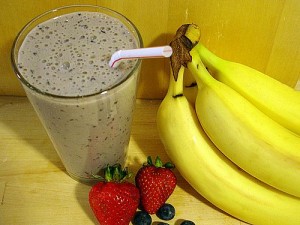
All in all, I think this provides us with everything we need to recover, is a reasonable price and is certainly healthier than just whey with some simple sugars. It also provides more benefits to me than just coconut water. You can also make this shake even healthier, depending on your budget. You can make the yogurt organic or even raw (regardless it should be from a company that does not use hormones), you can choose whey from grass-fed cows treated at low temperature, you can choose organic bananas, and organic local strawberries. The list can go on. Essentially you can keep adding in luxuries if it is within your budget, but they aren’t completely necessary.
That is also how I feel about coconut water. It is a luxury, not a necessity. If you can afford it, great, toss it in a smoothie and enjoy it. If it is outside your budget, then I don’t see this tremendous need for it. It is a fine product, but, like most things in the fitness world, it is not the holy grail many tout it to be.
Thoughts?
Filed under: General Health, Nutrition
It has been an insanely busy week and I have tried my damndest to get in even 2 blogs. So at 10:30 on a Friday night I am cranking out blog #2 just for you guys, so I hope you enjoy it.
I often get questions on how to spice up food, add a little more pop, variety and spice to meals that can sometimes become monotonous. So today I wanted to discuss a few condiment options that can really diversify your meal planning. There are obviously many more, but these are a few of my favorites.
1. Extra Virgin Olive Oil Basil Pesto.

I LOVE pesto. It is calorie dense, so you do have to be mindful of portion size, but it is most certainly delicious! The fat comes from the incredibly heart healthy extra virgin olive oil, and the basil provides some pretty potent health benefits as well. Basil has been shown to protect cell structures as well as chromosomes from radiation and oxidation. It has also been shown to have some very powerful anti-bacterial components. It is also anti-inflammatory, and is a good source of vitamin K, and vitamin A.
2. Hummus.
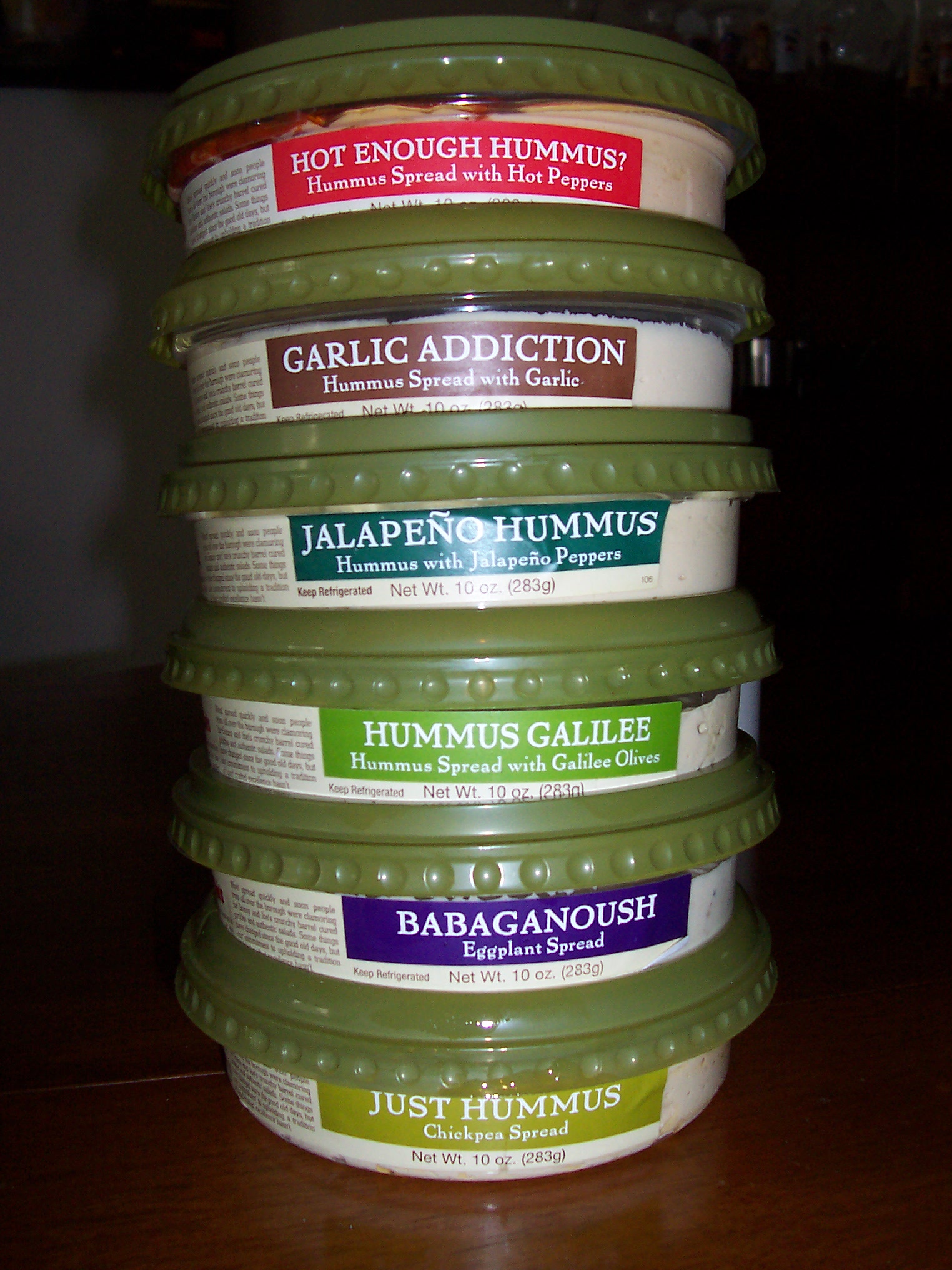
Hummus. One of my absolute favorite snacks. I don’t think a day goes by where I don’t have hummus with some baby carrots. I absolutely love it. It is low in calories, only 50 in 2 tbsp. It is made from chickpeas so it has little to no impact on blood sugar. The chickpeas are a great source of molybdenum, manganese, folate, fiber, protein and more! Molybdenum is not exactly a famous nutrient, but it is quite interesting. It helps to detoxify sulfites, which some people have reactions to and can cause rapid heartbeat, headache or disorientation.
3. Guacamole.

Gauc. Awesome in combination with pesto, absolutely awesome. Being made mainly from avocados, it is incredibly healthy. It provides a nice serving of heart healthy monounsaturated fats (like pesto) and also helps fight cancer of the mouth, breast, and prostate, and improves skin tone. Avocados also contain lutein, a powerful antioxidant that is essential to eye health. They also contain more potassium than bananas for blood pressure, is the richest source of beta-sitosterol, may increase HDL and provides more than 25 essential nutrients.
There you have it, three condiments that not only add a whole bunch of kick ass flavor to your cooking repertoire, but also had some kick ass nutrients to your health. Enjoy!
Filed under: General Health, Nutrition
Fact: Bears beat Battlestar Galactica.

Fact: Organic is not always better.
I know, I know, in some circles this is heresy, but it’s just how it is. There are certainly many foods where organic is clearly a better, healthier choice. There are other foods where there is absolutely no evidence that organic is better, and in some cases it may* even be worse. There unfortunately just isn’t a lot of solid research in the area. What little research there is has been inconclusive. It certainly seems like vitamin C content is higher in organically grown, other than that…who knows.
Eating more fruits and vegetables improves health, regardless of whether they are organically or conventionally grown. Obviously organic produce has lower pesticide residue and nitrates, but even conventionally grown produce is usually found to be well below acceptable limits. *There are also some other interesting, but not well studied (again), points to consider with organically grown produce. The lack of pesticides may cause potential increases in biological pesticides, endogenous toxin production, and potentially infectious microorganisms. This is not health-friendly stuff!

Having said all that, I am certainly not anti-organic. I still feel safer consuming a lot of organic produce, I just don’t think that it is always necessary. Fortunately for us consumers, a non-profit research organization called the Environmental Working Group has studied the sitation. They found which produce was the most likely to be contaminated by pesticides, and therefore best eaten organicically grown, and which ones were the least likely to be contaminated, and therefore can safely be eaten conventionally grown. Without further ado, here is your list of the 12 most contaminated foods:
- Peaches
- Apples
- Sweet Bell Peppers
- Celery
- Nectarines
- Strawberries
- Cherries
- Pears
- Imported Grapes
- Spinach
- Lettuce
- Potatoes
Scarily, almost 97% of peaches tested positive for pesticides, with almost 87% having two or more different pesticides found. Apples were at 92% and 72% respetively. I would highly recommend you consider purchasing produce on this list from organically grown choices, or at least wash them very well.
Here is the list of the 12 least contaminated foods, where I have absolutely (for now) no problem with you purchasing the conventionally grown version:
- Onions
- Avocados
- Sweet Corn
- Pineapples
- Mango
- Asparagus
- Sweet Peas
- Kiwi
- Bananas
- Cabbage
- Broccoli
- Papaya
The top three on this list had over 90% of their samples test negative for pesticides.There are other foods to consider besides produce, such as milk, butter, beef, poultry, coffee, etc. There is a lot to consider with those choices as well. I will leave that blog for another day.

In the end, if you choose to purchase organic all the time, that is totally up to you. If you have the means and desire, then have it. For those of us on a budget, trying to do the best we can, it’s at least good to know that there are some foods where the cheaper version is probably more than ok. The information is getting out there, the choice is yours.




















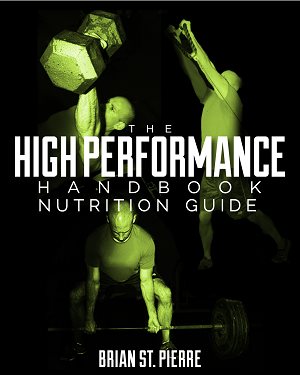

Posted on March 26th, 2012 by Brian St. Pierre
3 Comments »